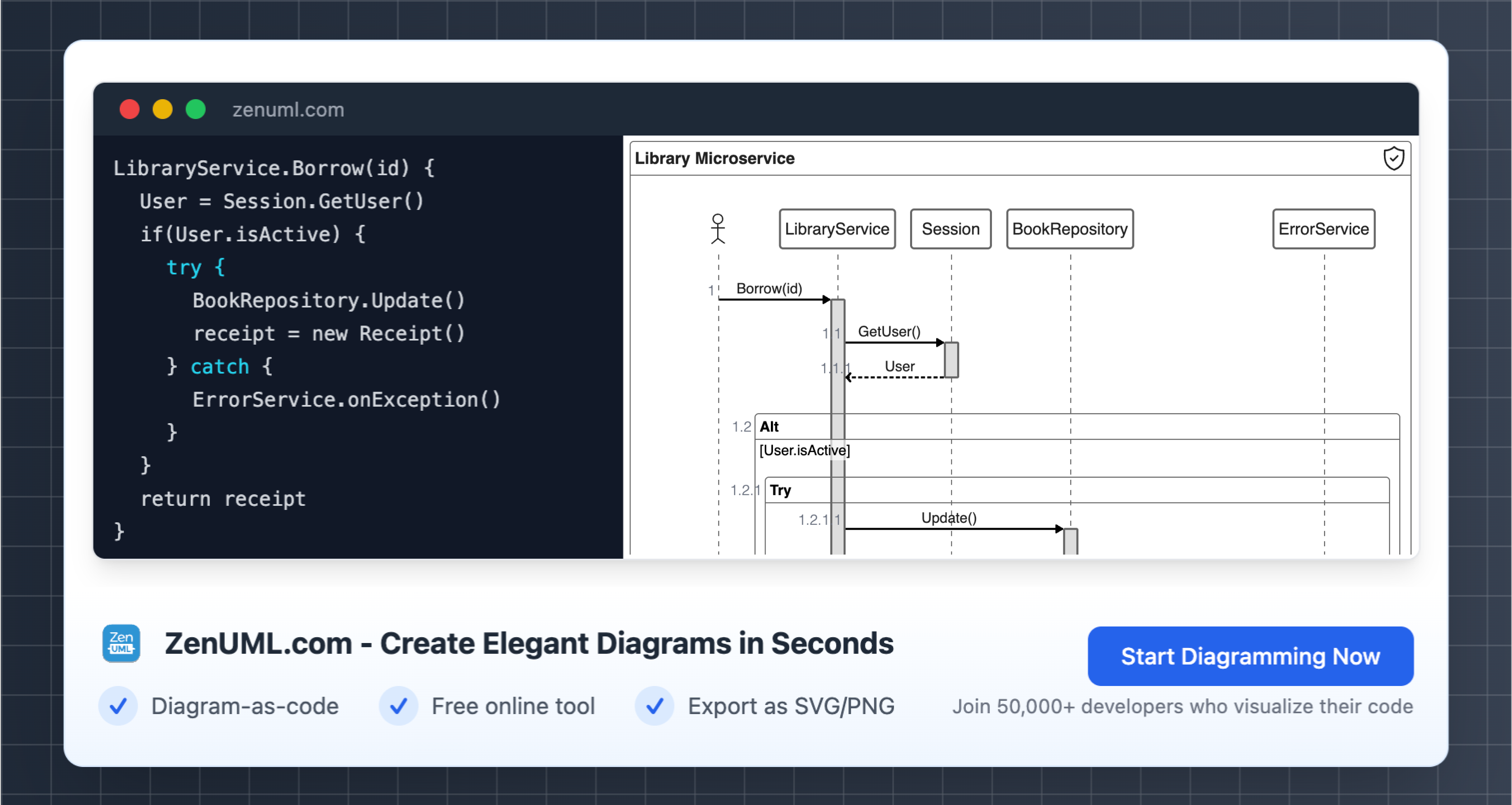In a world where technology is rapidly evolving, the ability to quickly and accurately visualize complex systems is more crucial than ever. Diagrams have long been the go-to tool for representing structures, workflows, and systems. However, traditional diagramming methods often fall short in an environment that demands agility and precision. Enter the concept of 'Diagram as Code'—a methodology where diagrams are generated from textual descriptions, merging the clarity of visual representation with the power of code. Here's why this approach is a game-changer.
1. The Psychological Edge of Code-Generated Diagrams
When we consider Scott Young's Two-Flow Theory in the context of diagramming, we uncover a compelling argument for Diagram as Code. The theory posits that most creative tasks require two distinct phases: generating raw ideas (creative fodder) and then refining those ideas into a useful product. Diagramming traditionally struggles with this bifurcation; it's all too easy to become bogged down trying to perfect a diagram from the outset, leading to creative blocks.
Diagram as Code neatly sidesteps this issue by separating the generation of creative material (the raw logical code) from its refinement (the resulting diagram). This approach mirrors the same method of separating the ideation phase from the execution phase.
In practice, this means that when using Diagram as Code, you can freely generate a wide array of structural ideas in code form without the pressure to refine them immediately. Then, when it's time to refine, the code is processed into a well-structured diagram. This separation of stages encourages a more free-flowing creation process and a critical, deliberate refinement process, optimizing both and avoiding the mental gridlock that occurs when trying to do both simultaneously.
2. The Logical Superiority of Code for Diagramming
While text is useful, code is purely logical. It's structured, concise, and precise—all qualities that are indispensable when representing complex systems. Unlike traditional text, which can be open to interpretation, code requires unambiguous syntax and semantics, leading to diagrams that are clear and accurate reflections of the intended structures.
This logical purity means that diagrams generated from code are less prone to misinterpretation or ambiguity. They provide a direct translation of the system's architecture, ensuring that everyone involved has a shared and precise understanding of the system's layout and function.
3. Ease of Maintenance with Text-Based Diagrams
Once a diagram is created, maintaining it becomes the next challenge. Diagram as Code solutions store diagrams as text, which is lightweight, editable, and compatible across different environments. Gone are the days of navigating through bulky proprietary formats or using specialized software for simple updates.
With text-based diagrams, updates can be made quickly and easily, often with nothing more than a text editor. This ease of maintenance ensures that diagrams can be kept up-to-date with minimal effort, reflecting changes in the systems they represent in real-time.
4. Seamless Integration of Diagrams in Documentation
Documentation is the backbone of any system, and diagrams play a crucial role in understanding that system. However, when diagrams are stored as binary files like VSD or JPEG, they become static snapshots that are difficult to update and integrate into documentation.
Text-based diagrams, on the other hand, can be as dynamic as the documents they complement. They can be embedded directly into technical documentation, ensuring that when the system changes, the diagrams can be updated simultaneously, maintaining consistency and coherence across all materials.
5. Version Control for Knowledge Management
In the realm of software development, version control systems are essential for tracking changes, managing collaboration, and maintaining historical records. Diagram as Code solutions leverage these same systems, treating diagrams just like any other piece of code.
By integrating diagrams into version control, we can track their evolution over time, easily roll back to previous versions, and understand the rationale behind each change. This means that diagrams are maintained and disseminated in an up-to-date fashion, at a very low cost and with the same level of control and oversight as the knowledge base itself(If you use version control system like git for your documents or use collaboration product like confluence.
6. Conclusion
In conclusion, Diagram as Code is not just a novel technique—it's a paradigm shift in how we visualize and manage complex information systems. By embracing this approach, individuals and organizations can benefit from increased efficiency, accuracy, and maintainability, ensuring that their diagrams are as agile and robust as the systems they represent. Whether you're a developer, a systems architect, or a project manager, the time to adopt Diagram as Code is now.
Zenuml detailed feature roadmap available here.

